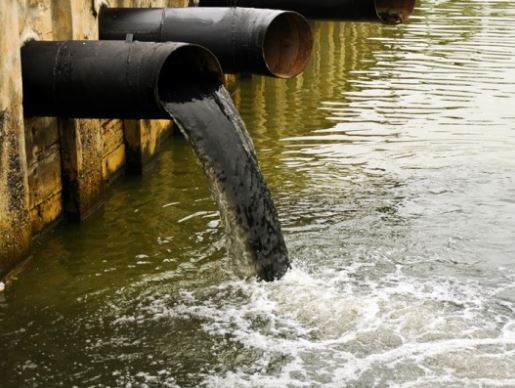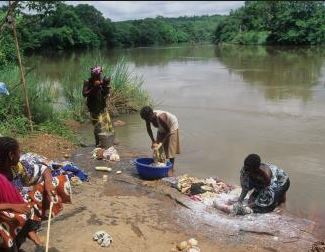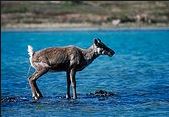Pollution means making something unclean or impure.
Pollution of water is making water and water sources unclean or impure.
The things that cause pollution are called pollutants.
Pollutants are released into water and water sources making the water unclean or not fit for human consumption.
Water can be polluted in many ways. Some of the ways through which water gets polluted include:
1. When factories release their untreated waste products which contain harmful chemicals in rivers, lakes, seas or oceans.

2. Transport accidents.
These may occur when ships have leaks therefore crude oil is spilled into the sea water. Other accidents may involve the ships sinking.


3. When soap and detergents are released into rivers and lakes when one is doing their washing in these rivers and lakes.
4. When sewage for example human waste (faeces and urine), kitchen waste (food remains) and animal waste are released in to the rivers, lakes, and seas.

5. When chemicals for example pesticides from the farm are washed by rain water into the rivers, lakes, seas and oceans.
6. When farmers use too much fertilizers and these fertilizers are washed away into the rivers by rain water.
7. When factories release chemicals into the air. Rain washes these chemicals and the result is polluted rain water that may be in the form of acid rain.
Water pollution can affect animals, plants and the soil in the following ways:
When water is polluted by factory chemicals the water becomes poisonous to animals. When animals drink this water they may die. When oil spills into seas, the animals that live in water are affected since the oil stops the animals from getting enough air (oxygen). Fish may die because they cannot be able to breath well.
The oil may also clog feathers of birds that are found around the water. This stops the birds from swimming or flying away when searching for their food. Animals may also get disease from water that is polluted by sewage. Diseases such as typhoid are spread in this way. Livestock may also get tapeworms from this kind of water. Water pollution increases the rate of water borne diseases being spread.
Pollution of water by kitchen waste and human and animal waste may encourage the growth of some water plants like hyacinth which grow on the water surface. These plants cut off the supply of air to the animals living in water. They also cut off light from them. Once these plants cover the whole surface of water, they may hinder human activities like fishing and even affect transport through water. An example of water that has been affected by hyacinth is the Nairobi dam and some part of lake Victoria.
When water is polluted by oil spills, plant life is in danger. The plant’s stomata may get blocked by the oil thereby making the plant to be unable to get air. The plant finally dies. Some chemicals from factories are poisonous to plants. They kill plants. Some animal waste and kitchen waste encourage the growth of weeds. When weeds grow next to crops, these weeds affect the growth of the crops.
They compete with crops for the nutrients that the crops would have used to produce a better yield. Acid rain is dangerous to plants. It makes the soil acidic therefore scorching the plants and killing them.
When acid rain falls on soil, it pollutes the soil making it acidic. This affects the animals that live in soil. It can kill the animals. Examples of such animals are earthworms. Soil next to rivers, lakes, seas, and oceans easily absorb water from these sources of water. If the water is contaminated or polluted by oil, then the oil stops air from penetrating into the soil, therefore, affecting both plant and animal life.
When rainwater washes pesticides and other chemicals from farms, the rain water penetrates into the soil sometimes leaving the chemicals in the soil. These chemicals may be harmful to the animals living in the soil.
Not all water is safe for drinking. Some water may be muddy while others may be clear but contain impurities making it unsafe to drink. Pure water should be clear, tasteless, has no smell, has no impurities like living organisms in it and should not have any dissolved substances in it like salts or gases.
To make water safe for drinking, we may have to use various methods. These methods are:
• decanting
• filtering
• boiling
• distilling
• adding chemicals.
The amount of clean water available in the environment for agriculture and domestic use is very little. This water should, therefore, be kept clean and free from pollution. Measures that can be taken to reduce water pollution are:
All factories and industries should avoid emptying or dumping their wastes into rivers. Instead, factory wastes should first be treated to remove pollutants before they are discharged into rivers.
• Factories and industries that discharge untreated water into our rivers and lakes should be fined heavily. Their licenses should be confiscated (taken away).
• All sewage should be treated before being discharged into rivers or lakes. All municipal councils should build sewage treatment plants.
• Since the amount of clean water for domestic use, in farming for livestock and crops is not much in the environment, some factories should be asked to use, reuse and recycle their water after treating it.
• As much as possible, farming practices should use pesticides that can be broken down. Only adequate amounts of the chemical should be used. Equally, we should avoid overuse of fertilizers and
encourage the use of manures such as compost or farmyard manure which do not cause water pollution.
• Factory and domestic solid wastes such as polythene bags, tins and plastics should not be thrown into water sources but should be recycled.
• Ships and oil tankers should be thoroughly inspected for any leaks before they are allowed to transport anything.
Standard 7
1. Which one of the following DOES NOT pollute river water?
A. Spraying of crops with pesticide
B. Releasing treated sewage water into the river
C. Use of fertilizers in farming
D. Cultivating along river banks